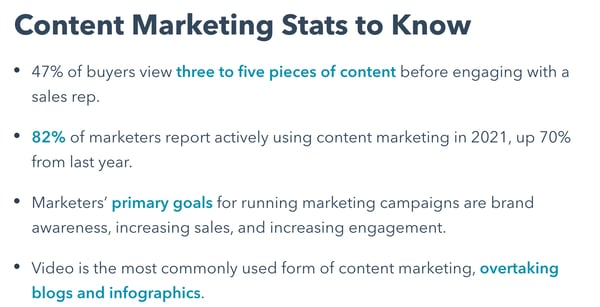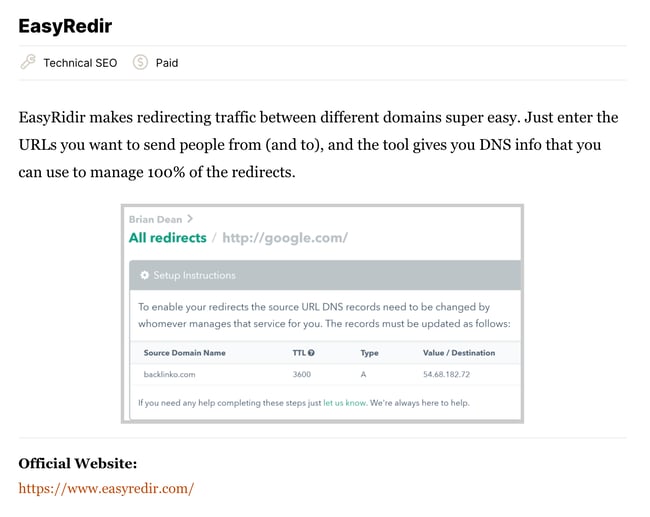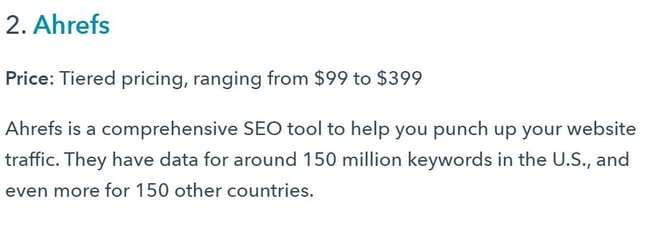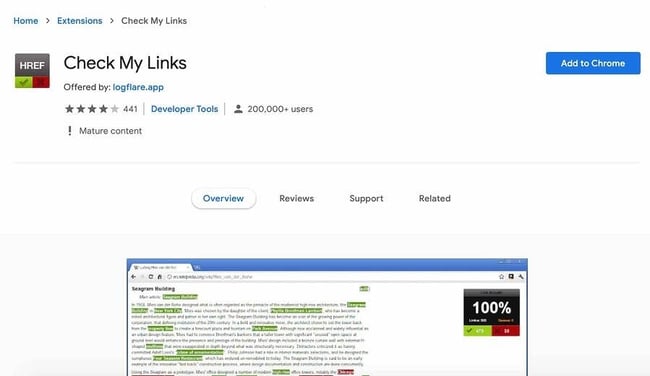Content. Links. RankBrain.
These are the top-ranking factors Google considers when it comes to showing results on the search engine result page (SERP). Given that much of search engine optimization centers around getting lots of good links to and from your website, it’s essential to learn how to make these links work for you.
In this article, we discuss what external linking is and why you should do it. We also reveal seven external linking best practices. At the end of this article, you’ll know how to use external linking to help your content appear higher on the search engine results page.
When should you link to other sites in SEO?
External links are hyperlinks that direct readers to a website other than your own. On the surface, using external links seems counter-intuitive—these links take people away from your website, after all. However, as we shall see later in this article, it’s one of the most essential sources of ranking power you can ever use.
Four Benefits of External Linking
Linking to outside websites, when done right, offers several benefits:
1. External linking improves your credibility.
When you add trustworthy and relevant website links to your content, it improves the credibility of your website. In addition, valuable external links provide your readers with references, which will enhance your website’s authority.
External linking is similar to the way you cite sources in a bibliography for an academic paper—it shows that you’ve created your content based on sound research.
2. External linking improves your SEO.
The external links you add can assist search engines in determining the usefulness and quality of your pages. High-quality pages usually link to other high-quality pages; thus, search engines will look at your content favorably, helping you rank higher.
If you link to an interesting article on a critical topic of interest to your business, Google uses this as one way to know what your website is about.
3. External linking is an easy way to create connections.
Other websites can tell when you’re linking to them. And the chances are that they might return the favor and link back to your website if the opportunity arises, which is great because the more quality backlinks you get, the better.
It’s an easy and positive way to reach out, make connections in your industry, and get your content in front of the right audience.
4. External linking offers readers more value.
Adding external links provides a better user experience for readers. These links lead to related information that adds to the value in your content without duplicating content. When readers see that you consistently link out to resources that’d help them understand a topic better, they’ll begin to associate more value with your website.
External Linking Best Practices
According to Google, linking is one of the most important factors for achieving high rankings, you must understand how to use external linking to your advantage. Here are key external linking best practices to adopt.
1. Make the links relevant.
When adding external links, don’t just add links for the sake of it. Instead, add links that direct readers to relevant content.
Good external links tend to point to related content. Examples of what you might link to include statistics, infographics, videos, etc.
Google and other search engines value users and want to show the most relevant results to their query. Therefore, when external links come from websites in the same niche, Google better understands the relevance of your content and its popularity, leading to a higher SERP ranking.
Example

2. Link to reputable sources.
The external link in the image above has 60% as its anchor text. It leads to a website that contains that statistic and other relevant information.
When linking externally, only link to sites that are authoritative and trustworthy. If you link to websites that promote clickbait content or aren’t professional, you’ll diminish your reader’s trust. And it could negatively affect how search engines rank your content.
If you have no choice but to link to websites where you don’t trust the content, use a no-follow tag. This tag indicates to search engine crawlers that the linked page shouldn’t be associated with your page.
Example
The latest content marketing report compiled by HubSpot is full of external links to reputable sources in the content marketing industry.

3. Use anchor text correctly.
Let’s examine a practical example of what makes a good and bad anchor text.
We’ve got an article on HubSpot that talks about how to write a blog post. You can click here to read that article.
See what I did there? The word “here” is what is known as the anchor text for the link. And this anchor text is essential for search engines to read your website. Unfortunately, by using “here” as an anchor text, I’m giving Google very little help or hints about the content of the page I’m linking to.
Instead, here is a much better (and right) way to do this:
The right way: We’ve got a previous article on HubSpot that talks about how to write a blog post.
The second way is much better than the first for multiple reasons.
First, the link is easier for readers to click on (and know that it’s a link). But, more important is the fact that we now have the anchor text as “how to write a blog post.” So, when the search engine spiders “see” this link, they factor in the anchor text when determining what the target page is about.
So, use descriptive keywords in anchor text or keywords the linked page is trying to target. However, don’t shoehorn anchor text into sentences because it can look like spam, and readers might find it annoying.
After including anchor text, read it again. Does it look forced? Does the link look helpful and natural? You want the latter to be true.
Here’s an example where Google gives more information about how to write good link text.
Example
4. Add helpful links.
How many external links should you use in your content? There’s no conclusive answer.
However, you shouldn’t overwhelm your reader with too many external or internal links. Your goal when linking should be to provide the best reader experience possible. You might end up losing readers if they feel they’re merely being used as part of your SEO strategy.
Example
This page from Backlinko has at least 150 external links and ranks #1 on the Google SERP for several queries. Therefore, you can have as many external links as you like as long as it makes sense to add them.

5. Open external links in a different tab.
Your external links should open in a different tab, and there are various reasons why this is important. However, the most significant reason to have links open in a new tab is that this gives the visitor as much control as possible with their experience on your site.
Example
This article about statistics that prove why link-building is important contains external links that open in a new tab. This lets the reader continue reading the article while also taking a look at the information you linked to without losing one or the other.
6. Don’t link to competing websites.
It’ll be detrimental to link to sites competing for the same keywords. For example, if you’re targeting the keyword “Best toys for dogs,” you shouldn’t link to a site that is already ranking #1 for this keyword.
Instead, link to websites that offer value to your content, like pages that contain general information. Using the “Best toys for dogs” example, you can link to a video about a specific dog toy you’re promoting that’s not on a competitor’s website.
Example

In the image above, HubSpot’s article about the best digital marketing tools doesn’t link to a competing article but links to specific tools like Ahrefs that support the article.
7. Conduct a link audit.
Spend some time every quarter (or within regular intervals) to audit your content for any outdated or broken links. Why’s this important?
When readers encounter broken or outdated external links in your content, it diminishes their experience, and they might begin to lose faith in your credibility.
You can use a tool like Check My Links to find broken links on your website.

Build a Successful External Linking Strategy
Quality external links in your content provide more resources to your readers while building your content and website’s authority. When done right, external linking can even boost your ranking on the SERP.
So now is the time to implement all you’ve learned from this article and make external links work for you.
Editor's note: This post was originally published in January 2007 and has been updated for comprehensiveness.
7 External Linking Best Practices for SEO was originally posted by Local Sign Company Irvine, Ca. https://goo.gl/4NmUQV https://goo.gl/bQ1zHR http://www.pearltrees.com/anaheimsigns
![→ Download Now: SEO Starter Pack [Free Kit]](https://no-cache.hubspot.com/cta/default/53/1d7211ac-7b1b-4405-b940-54b8acedb26e.png)


No comments:
Post a Comment